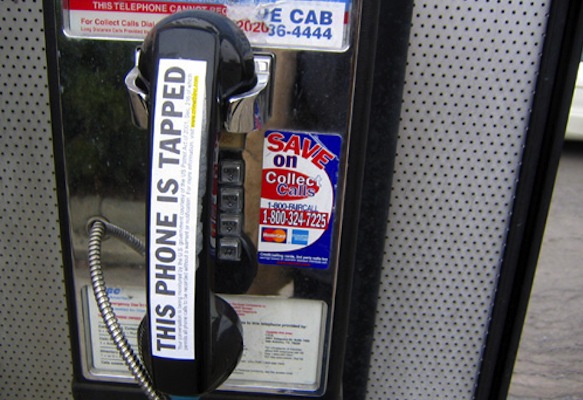Introduction
In the landmark case of People v. Myers, the New York Court of Appeals addressed critical issues surrounding the admissibility of evidence obtained through wiretaps and the statutory notice requirements under the Criminal Procedure Law (CPL). This case underscores the importance of strict compliance with procedural safeguards designed to protect individual privacy rights against unwarranted governmental intrusion.
Statement of the Legal Issue
The central legal issue in People v. Myers revolves around whether evidence obtained from a jail recording, which was derived from an intercepted communication via a wiretap, can be admitted at trial without adhering to the statutory notice requirements prescribed by CPL 700.70. Specifically, the court examined whether the prosecution’s failure to provide the defendant with a copy of the eavesdropping warrant and underlying application within 15 days of arraignment precluded the admission of such evidence.
Facts of the Case
Background of the Investigation
In October 2015, the Syracuse Police Department initiated an investigation into a fatal hit-and-run automobile accident. The suspect vehicle was identified and traced back to D.H., the defendant’s cousin. During police interviews, D.H. claimed that his girlfriend had borrowed the car at the time of the accident, while his girlfriend reported that the car had been stolen prior to the incident.
The Wiretap and Intercepted Communication
Concurrently, the New York Attorney General’s Office was conducting an unrelated investigation and had obtained a warrant to wiretap the phone of A.C. During the wiretap, a call from A.J., an inmate at the Onondaga County Justice Center (OCJC), was intercepted. A.J. initially called D.H., who then added A.C. to the call. During the conversation, D.H. asked A.C. to put the defendant, Michael Myers, on the phone. Myers made statements implicating himself in the hit-and-run accident.
Discovery of the Jail Recording
A Syracuse Police detective monitoring the wiretap recognized Myers’ voice and alerted the detectives investigating the hit-and-run case. Subsequently, the Syracuse Police obtained a recording of the call from OCJC. Myers was later indicted on a single count of leaving the scene of an incident without reporting, in violation of Vehicle and Traffic Law § 600 [2] [a].
Court’s Holding
Procedural Requirements Under CPL 700.70
The court emphasized the necessity of strict compliance with CPL 700.70, which mandates that the prosecution must furnish the defendant with a copy of the eavesdropping warrant and accompanying application within 15 days of arraignment. This requirement ensures that defendants are adequately informed of the evidence against them and can prepare their defense accordingly.
Definition of “Intercepted Communication”
The court clarified that the recording of the call made by OCJC was not itself an “intercepted communication” within the meaning of CPL 700.05, as it was made with the consent of A.J., the sender. However, the wiretap conducted by the Attorney General’s Office was deemed an “intercepted communication” because it was recorded without the consent of the sender or receiver.
Derivation of Evidence
The court determined that the jail recording obtained from OCJC was “derived” from the intercepted communication. The wiretap recording informed law enforcement about the existence of the jail recording, leading directly to its discovery and use as evidence at trial. Therefore, the jail recording was subject to the notice requirements of CPL 700.70.
Conclusion and Reversal
The court concluded that the prosecution’s failure to provide timely notice of the eavesdropping warrant and underlying application precluded the admission of both the wiretap recording and the jail recording derived from it. Consequently, the court reversed the order of the Appellate Division, granted the defendant’s motion to preclude the evidence, and ordered a new trial.
Key Terms
- People v. Myers
- Wiretap evidence
- Statutory notice requirements
- Criminal Procedure Law (CPL) 700.70
- Intercepted communication
- Eavesdropping warrant
- New York Court of Appeals
- Privacy rights
- Hit-and-run investigation
- Admissibility of evidence
Implications of the Court’s Decision
The decision in People v. Myers has significant implications for law enforcement and the prosecution of criminal cases involving wiretap evidence. It reinforces the principle that procedural safeguards must be rigorously observed to protect individual privacy rights. The ruling also serves as a reminder that evidence obtained through wiretaps must be handled with utmost care, ensuring that all statutory requirements are met to avoid jeopardizing the admissibility of crucial evidence at trial.
Conclusion
The case of People v. Myers highlights the delicate balance between effective law enforcement and the protection of individual privacy rights. By strictly enforcing the notice requirements under CPL 700.70, the New York Court of Appeals has reaffirmed the importance of procedural compliance in safeguarding constitutional guarantees against unreasonable search and seizure. This decision serves as a critical precedent for future cases involving wiretap evidence and underscores the need for meticulous adherence to statutory procedures in the criminal justice system.
